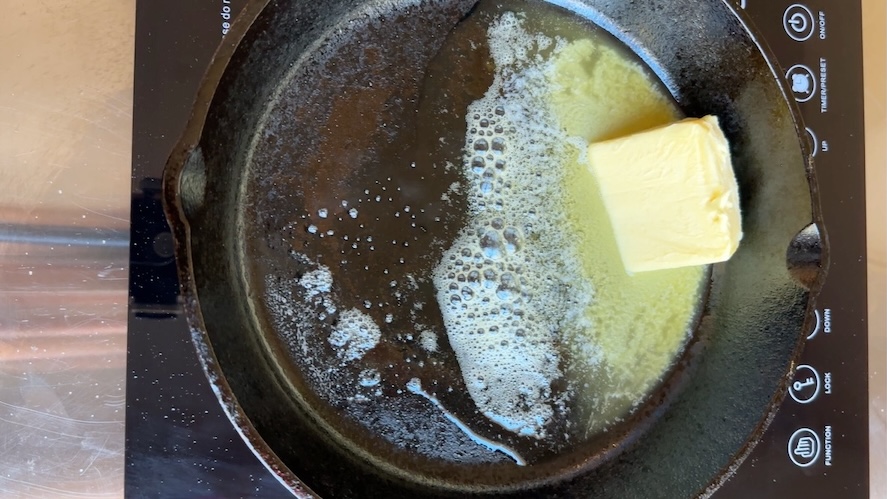Here's Why You Should Buy Butter at the Store
- Updated on:
- Original post date: 01/05/2025

I was perfecting my chocolate chip cookie recipe when I suddenly discovered a wealth of knowledge about butter — specifically butterfat. Picking the right butter with a good fat-to-water and milk solids ratio is very important in baking. So, my #1 question was, “How do I guarantee my butter has the fat content that’s advertised?” I went on a hunt for the answer and found some pretty interesting facts.
But First, Lots of People Ask: “Is Homemade Butter Healthier Than Store-Bought?”
When I talk about which butters are “better” than others, some people’s first thoughts are about nutrition. Healthiness is defined differently for each person, but, in general, the only ingredient there is in butter is pasteurized cream. Due to the diet of the cows and the processing of the butter, some store-bought versions offer varying amounts of:
- Vitamins and minerals
- Sodium and salt
- Cultures from fermentation
- Butterfat
- Milk solids
- Additive flavors (natural or artificial)
If you’re looking for a specific nutritional aspect to butter, those nutritional benefits or detriments are easier to find in regulated store-bought butter than in homemade. The only measurable benefits of homemade butter are that you can choose the source of cream and easily add seasonings (if desired) while the butter is still soft. When it comes to nutrition, you should consult a registered dietitian and speak with your physician to determine what’s best for you.
Now that that’s out of the way: I’m not here to talk about the healthiness of butter. I’m here to speak on its taste and chemical composition and how that affects the baking process. Let’s get into butterfat…
Measuring Butterfat is a Complicated Mechanical Process
A New Zealand Dairy Research Institute study from 1999 shows there are two methods used to measure butterfat content: indirect and direct. They’re both still used today.
The Fat-by-Difference Method (Indirect)
The indirect or “fat-by-difference” method finds the non-fat portion of butter and determines the remaining content to be fat. While this method is easier, manufacturers risk an inaccurate reading due to potential contaminants in the butter. For this reason, the fat-by-difference method is not an all-encompassing solution to measuring components of a butter product.
Near-Infrared Analysis (Direct)
The direct method is much more accurate than the indirect. However, it’s quite expensive and wasn’t always attainable. That was until 1996 when the International Dairy Federation (IDF) began officially searching for a direct measurement method. The result was and still is Near-Infrared (NIR) Testing (link), but I had an extremely difficult time finding the name of a machine capable of performing NIR on butter. I ended up contacting a few butter companies for help, and Vital Farms (not sponsored) was kind enough to let me know they use NIR testing themselves. “We use the FOSS machine, which is the industry-wide standard,” says Vital Farms.
FOSS is a company very important to the molecular food analysis field. For butter specifically, they devised a machine that continually analyzes butter fat content called the ProFoss2. It uses “high resolution diode array” technology to measure fat while butter is being churned. As you might imagine, machines like these run manufacturers costs that range in the thousands.
Who Verifies Butterfat Content for Manufacturers?
Similar to all other food industry manufacturers, butter manufacturers are regulated by the Center for Food Safety and Applied Nutrition (CFSAN). In addition to this governmental entity in the U.S., the IDF itself is a private subsidiary of the International Organization of Standardization which has participating standards bodies from 167 different countries. All associated bodies regulating dairy companies under the ISO seem to operate off the same standards for measuring butter.
Can You Measure Butterfat Content at Home?
The answer is no. Unless you’re looking to make your abode into a butter factory, there is not an accurate way for you to measure butterfat in the home kitchen. If you’re curious, then about the only thing you can do in your own kitchen is measure water content by browning your butter and measuring the difference in weight. Otherwise, we’re just trusting the behind-the-scenes dairy regulators.
Is It Worth It to Make Homemade Butter?
That depends entirely on how you intend to source and use your heavy cream. First and foremost, don’t be fooled by products that only say “whipping cream” or “light whipping cream.” These are regulated by the FDA to have between 30 and 36 percent milkfat content, making it less likely that you’ll yearn a high-butterfat (and in many cases better-tasting) butter product. The FDA regulations on heavy cream or “heavy whipping cream” define it as, “cream which contains not less than 36 percent milkfat. It is pasteurized or ultra-pasteurized, and may be homogenized.” Using the correct cream can immediately help you yield a higher-quality butter.
Second, it’s only worth spending your money on heavy cream if you intend to use the resulting buttermilk. Buttermilk can run you the same price as a package of butter, while heavy cream can be more inexpensive than either of the separated products. So, buttermilk lovers can rejoice at the thought of a cost-effective habit of making homemade butter.
Lastly, it’s worth making butter at home, when you have easy access to a dairy farm or when you are a dairy farmer yourself. Oftentimes, local dairy producers have control over the most intricate details in the flavor of their dairy products, which can yield a better-tasting butter regardless of butterfat content. This is why, even though Kerrygold butter is only 82% butterfat, it gives baked goods a wonderful, rich depth of flavor.
But — as is the entire point of this article — not everyone has access to a dairy farm or the time to make homemade butter. If you’re just looking for the product with the least hassle and most flavor, your clear alternative is European-style butters at the grocery store (butters with 82% or higher butterfat content). I personally am a fan of Vital Farms’ 85%-butterfat butter, but there are a TON of brands out there to choose from nowadays.
Best of luck on your baking adventures!
